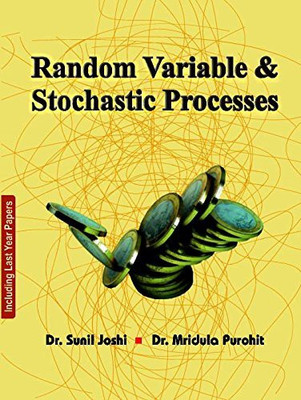
Get notified when this item comes back in stock.
Daily Practice Problem (Dpp) Sheets for Jee Main/ Bitsat/ Aipmt/ Aiims Chemistry (English, Paperback, Disha Experts)
Share
Daily Practice Problem (Dpp) Sheets for Jee Main/ Bitsat/ Aipmt/ Aiims Chemistry (English, Paperback, Disha Experts)
4.5
54 Ratings & 3 Reviews₹194
₹360
46% off
Sold Out
This item is currently out of stock
Highlights
- Language: English
- Binding: Paperback
- Publisher: Disha Publication
- Genre: Technology & Engineering
- ISBN: 9789385576317, 9789385576317
- Edition: 1, 2015
- Pages: 356
Seller
Description
The DPP Sheets are based on the concept of Prepare, Asses and improve.
Assessment is the most integral part of a student's preparation but still most of them avoid it. Assessment can only tell where you stand and how you can improve from that point. So it is very important that you take the right assessment, which is on the correct pattern, has the same level of difficulty as the actual exam and covers all the important concepts of the subject.
The book "Daily Practice Problem (DPP) Sheets for JEE Main/ AIPMT Chemistry" is precise, apt and tuned to all the requirements of a JEE Main aspirant.
No matter where you prepare from – a coaching or NCERT books or any other textbook/ Guide - Daily Practice Problem Sheets provides you the right assesment on each topic. Your performance provides you the right cues to improve your concepts so as to perform better in the final examination.
It is to be noted here that these are not tests but act as a checklist of student's learning and ability to apply concepts to different problems.
It is our strong belief that if an aspirant works hard on the cues provided through each of the DPP sheets he/ she can improve his/ her learning and finally the SCORE by at least 20%.
Book Features:
Division of the complete JEE Main/ AIPMT syllabus into 60 Most important Topics. Each chapter has been broken into 2 or more topics
Time Limit, Maximum Marks, Cut-off, Qualifying Score for each DPP Sheet
Ultimate tool for Concept Checking & Speed Building
Collection of 1750+ Standardised MCQ's that will of all variety of questions
Unique & innovative way of Learning through Assessment
2 Separate Booklets - DPP Booklet & Solution Booklet
The DPP Sheet covers all important Concepts of each Topic
As per latest pattern & syllabus of JEE Main/ NEET exam
Compliant to all boards of education
Table of Contents:
Basic Concepts of Chemistry 1 (Equivalent Concept): Physical Quantities and their measurement in Chemistry, Significant figure, Laws of chemical combination, Concentration terms, Equivalent weight
Basic Concepts of Chemistry DPP 2 (Mole Concepts)
Atomic structure 1(Fundamental Particles, Atomic Models, Bohr's Atomic Model, Hydrogen spectrum, Sommerfeld's Model )
Atomic structure 2 (Heisenberg's uncertainty principle, Quantum Numbers orbitals, Electronic configuration Principles, Energy level diagram, Extra stability of half filled and completely filled orbitals)
Classification of Elements & Periodicity
Chemical Bond, Octet Rule, Ionic Bond, Covalent Bond, Fajan's Rule
Valence bond theory, Hybridisation, VSEPR theory, Dipole moment, Hydrogen Bond, Van der Waals forces, Molecular Orbital Theory (MOT), Metallic bond
States of Matter-1 (Gas laws, ideal gas equation, kinetic theory of gases, concepts of average root mean square and most probable speed)
Real gases, deviation from ideal behaviour, compressibility factor, Van der Waals equation, liquefaction of gases, critical constant and liquid state
Thermodynamics-1 (First Law of Thermodynamics, Thermochemical Equations)
Thermodynamics-2 (Laws of Thermochemistry, Entropy, Spontaneous Process)
Chemical Equilibrium
Ionic equilibrium (Ionisation of weak electrolyte, Arrhenius theory, Bronsted-Lowry concept, Ionic Product of Water, pH Scale, Hydrolysis)
Equilibrium 3: Buffer solution, solubility & common ion effect
Redox Reactions
Hydrogen
S-block elements-1 (Alkali Metals)
s-block elements-2 (Alkaline earth metals)
p-block elements (Gp-13)-1
p-block elements (Gp-14)-2
General Organic Chemistry-1 (Classification & Nomenclature)
General Organic Chemistry-2 (Isomerism)
General Organic Chemistry III: Inductive effect, Resonance (or mesomeric) effect, Electromeric effect, Hyperconjugation
General Organic Chemistry IV: Bond fission, Reaction intermediates, Reagents, Reaction mechanism
Hydrocarbons-1-(Alkanes)
Hydrocarbons-2 (Alkenes)
Hydrocarbons-3-(Alkynes)
Environmental Chemistry
Solid State-1: Properties and Types of Solid, Crystallography and Lattice, Crystal Packing
Solid State-II (Mathematical analysis of cubic system and Bragg's equation, Crystal structure and Coordination number, Defects in crystal
Solution I: Solubility, Method of Expressing Concentration of Solutions, Colligative Properties, Relative Lowering of Vapour Pressure, Ideal and Non-ideal solutions
Solution-II: Azeotropic mixtures, Osmosis and osmotic pressure of solution, Elevation of boiling point of the solvent, Depression of freezing point, Collegative properties of electrolysis, Abnormal molecular masses
Electro Chemistry I: Electrolytes and Electrolysis, Faraday's law of electrolysis, Conductor & Conductance
Electro Chemistry II: Cell constant and Electro chemical cells, Electrode potential, Ecell, Nernst equation and ECS
Chemical Kinetics - I: Rate of a Reaction, Rate law & Rate constant
Chemical Kinetics-II: Collision Theory, Energy of Activation and Arrhenius Equation, Photochemical Reactions
Surface Chemistry
Extraction of Metal - I: Occurance, Concentration, Roasting & Calcination
Extraction of Metal- II: Reduction to free Metal, Refining of Crude Metal
p-block Elements-III (Group-15): Nitrogen Family
p-block Elements-IV (Group-16): Oxygen family
p-block elements (Gp-17 & 18): Halogen Family & Inert Gases
d & f-block elements I: General characteristics of d & f-block elements
d & f-Block Elements - II: Compounds of transition elements
Coordination Compounds
Haloalkanes & Haloarenes - I: Introduction and Preparation of Halogen containing compounds
Haloalkanes and Haloarenes-II: Properties and uses of Halogen Containing Compounds
Alcohols
Phenols
Ethers
Aldehydes and Ketones - I: Introduction and Preparation of Aldehydes and Ketones
Aldehyde and Ketones - II: Properties of Aldehydes and Ketones
Carboxylic acids & their uses: General introduction of carboxylic acids and their preparation, properties & uses of carboxylic acid and their derivatives
Nitrogen Containing Compounds - I
Nitrogen Containing Compounds - II
Biomolecules-I Carbohydrates, Amino acids, Proteins and Enzymes
Bimolecules - II: Fats and Lipids, Vitamins, Hormones and Nucleic acids
Polymer: Classification of Polymers, General Methods of Preparation of polymers and Mechanism of Polymerisation, Composition, Properties and Uses of Polymers
Chemistry in Action: Dyes and Pigment, Drugs and Medicines, Rocket-Propellant and other
Analytical Chemistry: Preliminary Test, Met test for acid radical, met test for basic radical, volumetric analysis
Read More
Specifications
Book Details
| Imprint |
|
| Publication Year |
|
| Number of Pages |
|
Contributors
| Author Info |
|
Ratings & Reviews
4.5
★
54 Ratings &
3 Reviews
- 5★
- 4★
- 3★
- 2★
- 1★
- 35
- 12
- 5
- 2
- 0
5
Must buy!
Must for iitjee
READ MOREAbhinav Jha
Certified Buyer, Chandrapur
Jun, 2017
1
0
Report Abuse
3
Faced minor issues
Average one.in solution sime answers are wrong
READ MOREFlipkart Customer
Certified Buyer, Agartala
Nov, 2016
1
0
Report Abuse
Be the first to ask about this product
Safe and Secure Payments.Easy returns.100% Authentic products.
Back to top





